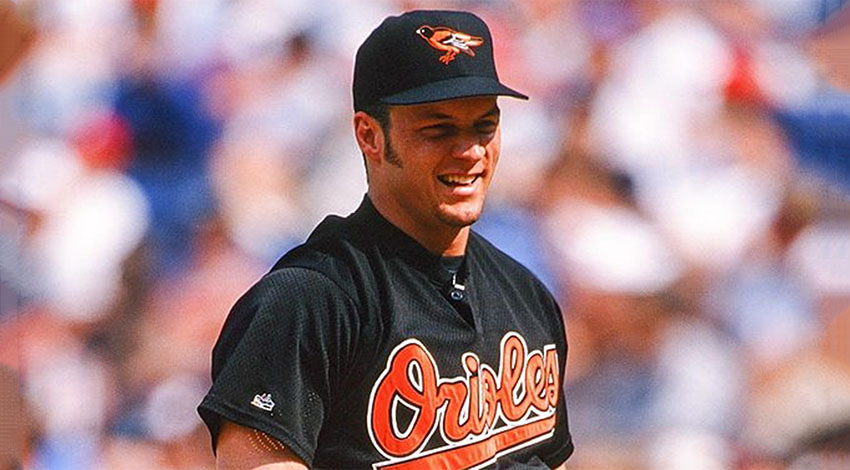Over two decades ago, a particularly memorable moment in baseball history, which many regard as the quintessential American sport, took place. Brady Anderson, representing the Baltimore Orioles, achieved the commendable feat of hitting more than 50 homeruns in a season. There have been whispers and murmurs; some enthusiasts and experts hint that Anderson might have turned to steroids in the 1996 season to enhance his performance. However, these remain mere conjectures, as concrete evidence to support such claims is elusive.
A Glimpse into His Early Life and Career
Brady Anderson, the prodigious baseball talent, hailed from Silver Spring in Maryland, which is closely nestled near Washington, D.C. He later moved to California, completing his high school education at Carlsbad High School. Pursuing further studies, he secured a place at the University of California Irvine, showcasing commendable academic prowess.
The year 1985 was significant for Anderson. Despite the Boston Red Sox clinching a victory against his team with a 6-1 scoreline, Anderson’s performance in the minor league did not go unnoticed. He displayed innate talent and potential, drawing attention to his skills during his debut MLB season in 1986. His statistics were impressive, producing 319/.459/.504 hits while representing the Winter Haven Red Sox in the Florida State League, which has since disbanded. Fans and fellow athletes were in awe of Anderson’s speed, evidenced by his 44 stolen bases, his strength, which yielded 19 doubles, 12 home runs, and 11 triples, and his impressive discipline, earning him 107 walks. A combination of these qualities catapulted him to stardom. However, the subsequent 1987 season saw him limited to 75 games due to a nightclub-related ankle injury.
Anderson’s prowess continued to shine as he delivered .321/.457/.474 hits in the more advanced minor leagues. By the following year, with a wealth of experience under his belt, Anderson made his prominent debut in the MLB, donning the Red Sox uniform.
In a significant development in 1988, Brady Anderson, along with Curt Schilling and Mike Boddicker, was acquired by the Baltimore Orioles. After demonstrating his mettle in the 1990 Boston season, he found himself traded to the Houston Astros in exchange for Glenn Davis. Anderson’s reputation was such that he ranked amongst the few players whose acquisition was deemed more valuable than those they were traded for. His proficiency made him a sought-after asset for many baseball teams.
During the 1993 and 1995 seasons, Anderson maintained a consistent performance metric. However, when Davey Johnson took over as the Orioles’ manager in 1996, he lauded Anderson’s agility and prowess but expressed reservations about Anderson’s uppercut swing technique.
Brady Anderson’s Challenging Times
The year 1997 posed significant challenges for Brady Anderson. His performance during the spring was less than stellar, shaking his usually steadfast confidence. As the season progressed, misfortune continued to shadow him. An injury sidelined him, and he found himself classified among disabled players, marking a halt in his participation for the subsequent season.
The specifics of the injury were concerning: a strained right sternoclavicular joint compounded with tension in the right neck muscle and trapezius. These muscles and joints were pivotal for Anderson, especially when positioning his hand low before elevating it for a hit.
Though the season proved to be one of the toughest in his career, Anderson’s resilience shone through. After a period of recovery, he came back with renewed vigor in the following season. He continued to showcase his skills and prowess, with a notable highlight being his performance in 2002 as a member of the Cleveland Indians.
Questioning the Steroid Saga
There have been ongoing speculations suggesting Brady Anderson’s use of performance-enhancing drugs (PEDs) throughout the entirety of the 1996 season. Given the heights reached during the anabolic era, this assumption isn’t entirely far-fetched. In that season, Anderson’s feats on the field were nothing short of remarkable.
However, Anderson has consistently refuted claims of taking such drugs, a denial that isn’t surprising given the stigma associated with PEDs. What’s intriguing is that Anderson’s name was conspicuously missing from the Mitchell Report of 2007, conducted by George John Mitchell Jr., a former Democratic U.S. Senator renowned for his meticulous investigations into PED use in sports. One has to ponder: if Anderson truly consumed anabolics, why wasn’t there substantial evidence in this comprehensive report? To assert his use of banned substances merely based on his success in home runs seems rather hasty.
Considering Anderson’s dedication to training, as praised by fellow player Cal Ripken Jr., and his evident discipline in dietary and workout regimes, it’s crucial to understand the physiological effects of steroids. Steroid users typically gain significant weight rapidly. Contrarily, Anderson’s physical changes over the years hardly support the PED allegations. Between 1989 and 1998, Anderson’s weight only increased by 16 pounds, fluctuating modestly throughout the decade. Comparatively, Barry Bonds, another player under PED scrutiny, experienced more significant weight surges within shorter intervals.
Steroids are typically used by athletes to gain significant muscle mass, enhancing their power and performance. Yet, Anderson, curiously, showed periods of weight loss during his career. If he indeed took steroids, then his results defy conventional outcomes. Steroids might cause weight loss, but that’s usually specific to bodybuilders prepping for competitions. It’s counterintuitive for a baseball player, whose focus would be on power, to decrease weight intentionally.
The weight Anderson gained between 1997 and 1998 might raise eyebrows, but context is essential. After his injury in 1997, reduced physical activity combined with sustained caloric intake could logically explain the minor weight gain.
Brief weight fluctuations, like the one between 1996 and 1997, are natural and can easily occur without steroid use. It’s pivotal to approach the steroid debate with caution, relying on comprehensive evidence rather than circumstantial observations.
Brady Anderson and the Steroid Controversy
The subject of Brady Anderson’s alleged use of steroids like Boldenone, Sustanon, nandrolone, and androstenedione remains a topic of debate. While there’s no concrete evidence linking him to performance-enhancing drugs, the rumors have persisted. If Anderson did resort to such measures, indications suggest it was limited to the 1996 season. When weighed against other players who’ve been regularly associated with performance enhancers, Anderson’s supposed involvement seems minimal. Accusations without concrete evidence can be damaging, and it is hoped that he is remembered primarily for his remarkable baseball contributions.
That said, the broader issue of performance-enhancing drugs in baseball remains a concern. Notably, in May 2018, Robinson Jose Cano Mercedes received an 80-game suspension after testing positive for Furosemide, a masking agent. Similarly, in March 2019, Steven Wright faced an 80-game suspension due to the use of GHRP-2. The debate on the role and impact of these substances in sports continues.

